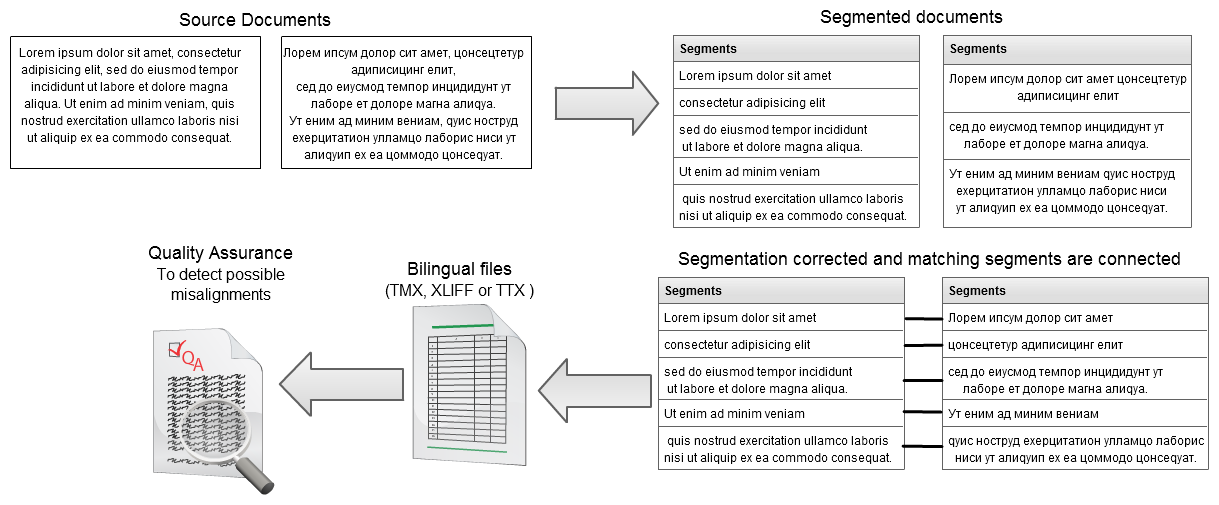Alignment
A Translation Memory is a great tool – especially when all your legacy translations are included!A translation memory is a database of all the translations done before. It includes the source and the translation text in parallel, so the translation of a sentence written in the source language can be easily looked up. While translation memories are often seen as a productivity booster, they also improve quality. In fact, they can be a great source of terminology and help to ensure consistency in translations. Nowadays, translation memories are quite easy to create: most translators work in a CAT (Computer Aided Translation) tool like memoQ or Trados, and during the process, translation memories are created automatically. But you may have a lot of legacy translations from the pre-TM era. Moreover, in some workflows, modifications are carried out in the documents themselves, without using any CAT tool. What to do in cases like these? The solution is alignment, a process of creating translation memory databases from pre-existing documentation. Our team has already aligned millions of words in diverse language pairs, including some not written in Latin script. When we say millions, we mean it literally: about 7 million words have been aligned in our office so far.
Language services*
Technical services**
- Testing
- Localization Engineering
- Alignment
* available in some languages
** all languages supported
